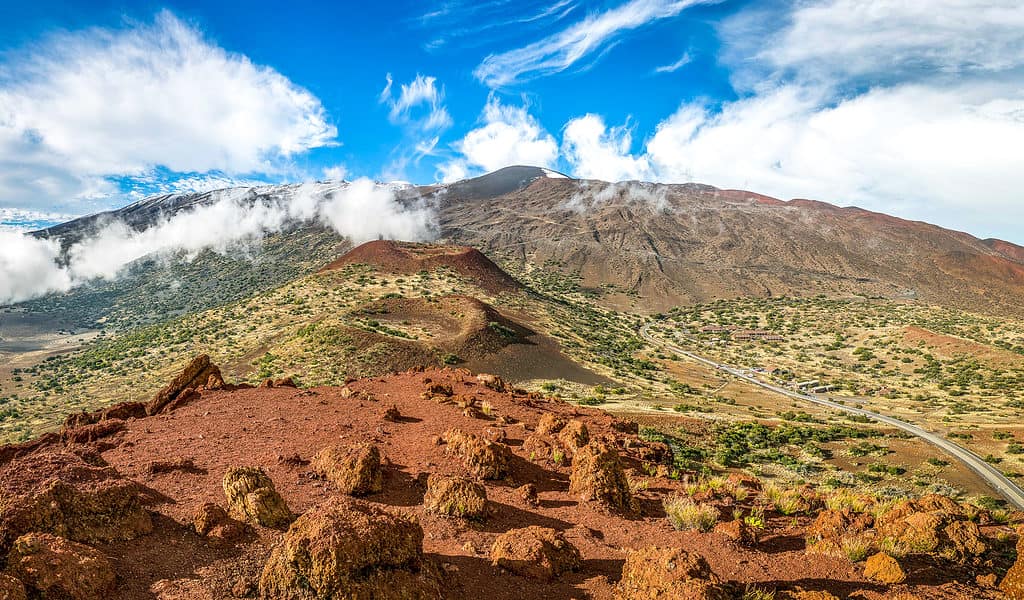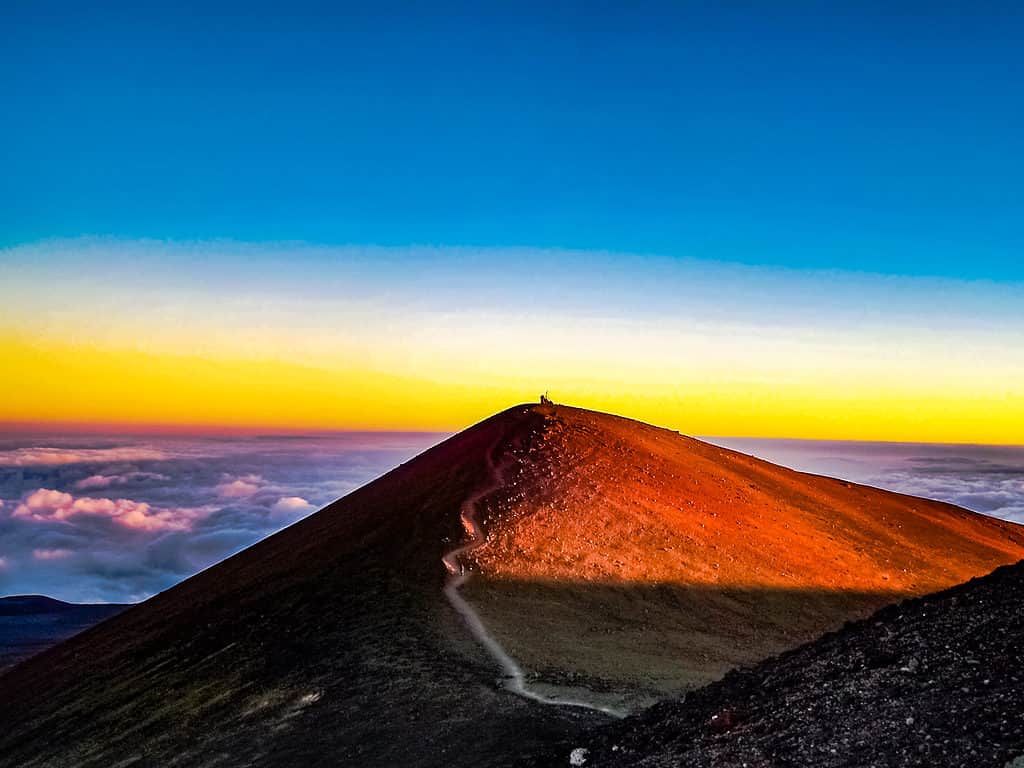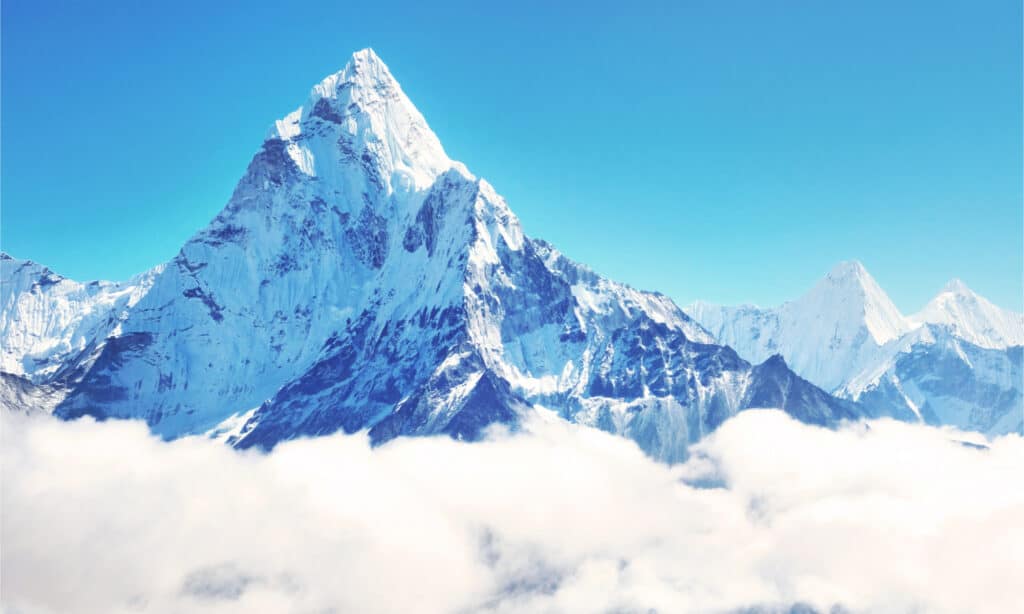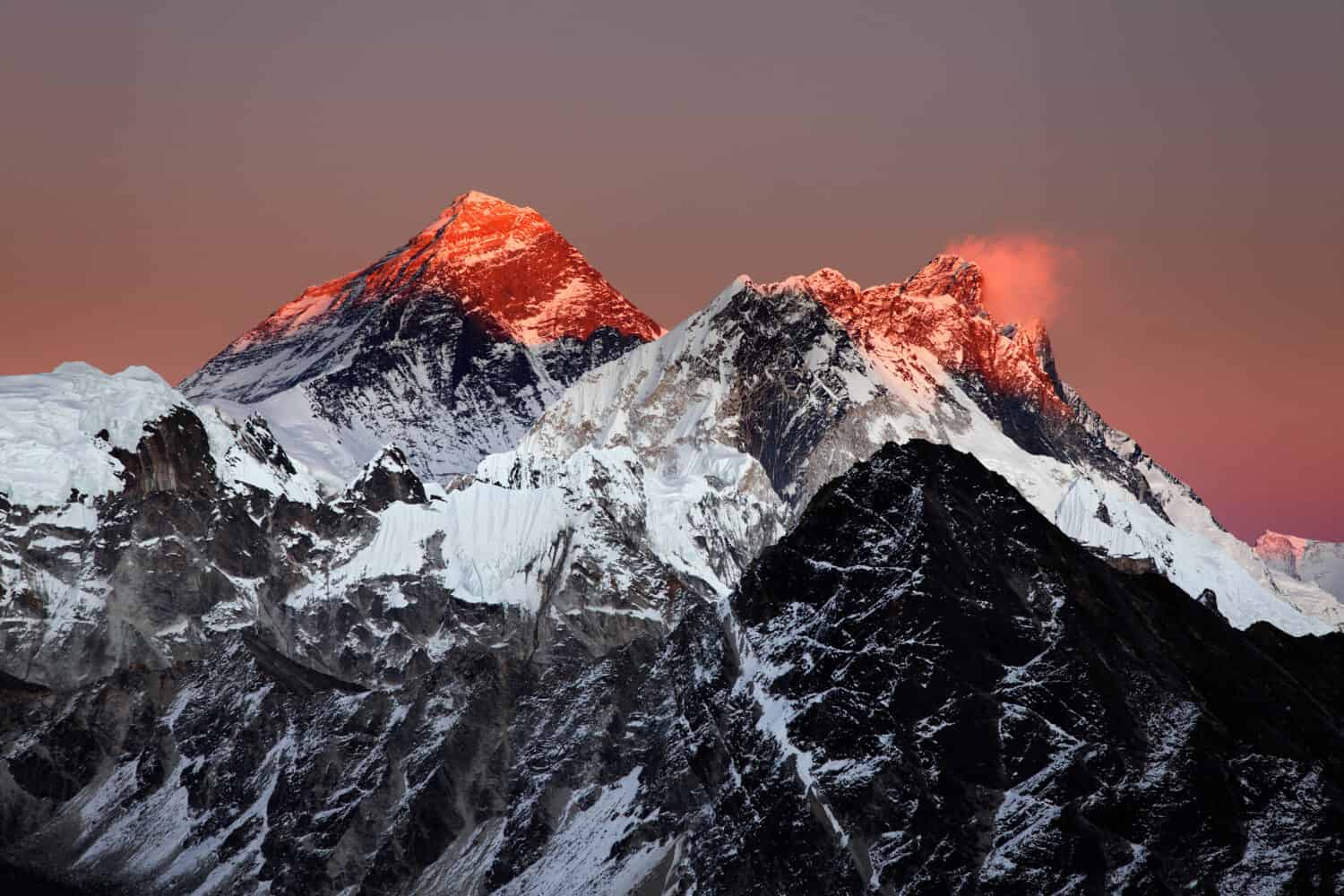You’ve probably heard that the tallest mountain in the world is Mount Everest in Nepal. It’s certainly a very popular and constantly mentioned one, however, it may not be the tallest. Currently, there is a large disagreement over which mountain holds the title. It all depends on how you calculate the tallest. Technically, Mount Everest is the tallest mountain in the world from sea level to peak. So, what mountain is the other contender? Mauna Kea, a dormant volcano in Hawaii, from base to peak is 33,500 feet. However, you can only reach a maximum elevation of 13,796 feet above sea level. Interesting, right? Here we are comparing Mauna Kea vs Everest including its history, size, and climbing challenges. Keep reading to learn more.
About Mauna Kea
Starting our comparison, we are going to discuss Mauna Kea. This dormant volcano is on the island of Hawaiʻi. Its name means “white mountain”. This unique mountain is perfect for visitors who don’t want to climb to the top. For instance, while visiting, you can bird-watch, camp, and hunt. Within the area is the Kalopa State Recreation Area.

Mauna Kea is a dormant volcano in Hawaii.
©Mason Lake Photo/Shutterstock.com
History
Mauna Kea has a long human history. The first Ancient Hawaiians to live near this mountain lived along the shore. They consumed flightless birds and considered Mauna Kea’s summit the most sacred mountain. So sacred, that only high-ranking aliʻi could visit the mountain. These native Hawaiians made tools from basalt and other natural resources as early as AD 1100. They also collected volcanic glass. It’s unlikely Ancient Hawaiians created trails and instead traveled through the mountain using water sources.
Formation
Mauna Kea is very old. It formed about 1 million years ago. This shield volcano formed as an entirely underwater volcano. However, as it erupted, it began taking shape. This volcano is one of five on the Island of Hawaii. The last eruption happened around 4,500 to 6,000 years ago. It was previously very active in the shield stage nearly 500,000 years ago. Although Mauna Kea is dormant, it’s likely to erupt again, however, when is unknown.

Mauna Kea formed about 1 million years ago as an underwater volcano.
©Chris Finch Photography/Shutterstock.com
Size
Considering it’s a contender for the tallest mountain in the world, you can imagine Mauna Kea’s size is impressive. It holds a lot of records. For instance, this mountain is the tallest in Hawaii. The peak is about 125 feet taller than Mauna Loa, a nearby active volcano. Much of the volcano/mountain is underwater, which is why some experts consider it the largest mountain in the world. Its elevation is 13,803 feet, however, about 19,698 feet of the mountain is underwater.
Wildlife
Many animals live on and around Mauna Kea, including native and endangered Hawaiian animals. For instance, while visiting, you may encounter the Hawaiian petrel, Palila, Hawaiian hoary bat, and 30 to 40 species of arthropods. Native vegetation includes Hawaiian bentgrass, Māmane trees, ‘Āheahea, and Nohoanu.

There Hawaiian Petrel is an endangered species sometimes spotted on Mauna Kea.
©Plate: Frohawk, Public domain, via Wikimedia Commons – Original / License
About Mount Everest
Although Mauna Kea is a great hiking, mountain, it’s not as well-known as Mount Everest. This massive mountain is risky. The first confirmed climbers to reach Mount Everest’s peak were Edmund Hillary and Tenzing Norgay on May 29, 1953. This stunning mountain is in the Mahalangur Himal sub-range of the Himalayas. Mount Everest is both in Nepal and Tibet and has two main climbing routes.

Mount Everest is in the
Himalayan
mountains.
©Vixit/Shutterstock.com
History
Mount Everest’s rough terrain and unpredictable weather have kept people away from the top for thousands of years. However, near the base of the mountain is Rongbuk Monastery in Tibet. This monastery sits 16,434 feet above sea level. Living around Mount Everest are the Sherpa people, native to the most mountainous regions of Nepal, Tingri County. They have held an important role in reaching the summit of Mount Everest. They are excellent mountaineers. Geneticists believe it’s because they have more than 30 genetic factors that help them withstand high altitudes. One of the first people to climb to the top of Mount Everest was Sherpa, Tenzing Norgay.
Formation
The formation of Mount Everest likely began about 60 million years ago when plates below India began moving forward to Eurasia, pushing up. To best explain this, we must go back to when no continents existed. Some scientists believe instead of separate continents, we had what is called Pangea. However, over time, this massive piece of land broke apart. This is the main theory, however, others believe that India may have been located a lot farther, If this is the case, the movement of India still formed Mouth Everest, but it may have not formed 60 million years ago. Interestingly, India continues to move toward Eurasia, changing the Himalayas and Mount Everest.

Mount Everest may be about 60 million years old.
©Vixit/Shutterstock.com
Size
Mount Everest is considered the tallest point on Earth. Its tallest point is 29,032 feet above sea level and still growing! Surface area is hard to calculate for the peak and the mountain. Impressively, Mount Everest also has over 500 glaciers.
Wildlife
With how cold and dangerous Mount Everest is, it’s no surprise that there are few native animals and plants. In the region, you may find musk deer, wild yak, snow leopards, and the Himalayan black bear. However, encountering these animals is rare, especially a snow leopard. The higher you climb, the less vegetation in the area. Moss may be the only plant growing above 21,000 feet on Mount Everest.
Mauna Kea vs Everest Challenges
There is always a risk in mountain climbing. Whenever you are hiking or climbing, always assume the worst as anything can happen, especially in remote areas. Climbing Mount Everest and Mauna Kea is very dangerous and comes with risks. You’ll need to pack appropriate clothes, food, and survival materials. Interestingly, although the climb to Mount Everest is considered harder, only two people have ever reached the top of Mauna Kea. Follow along to learn about the challenges of each climb.
Mauna Kea
Starting with Mauna Kea, only two people have completed a full ascent starting from the bottom. Victor Vescovo and Clifford Kapono used a submarine, outrigger canoe, bikes, and climbing gear to reach the top in three days. They currently hold the Guinness World Record for the first to complete the trek of the world’s tallest mountain.
To reach the top of the summit, you can use the Mauna Kea Hike, which is a 6-mile-long one-way trail. It’s steep and challenging. One of the biggest challenges isn’t the steepness, but the high elevation. Experts recommend staying in the Ellison Onizuka Visitor Information Station for about 30 minutes to 2 hours to get used to the air.
Also, wear appropriate shoes and clothes. Closed-toed shoes are a must. It takes hours to complete the hike, so wear sunscreen and pack plenty of water. Hydrate before starting the trail.
Everest
A lot fewer people have reached the top of Mount Everest. Sadly, over 300 people have lost their lives attempting to reach or descend this mountain. There are a lot of risks when it comes to climbing Mount Everest, but the main risk is the high winds and shifting weather, which can quickly make your climbing challenge, dangerous.
Not just anyone can decide to climb Mount Everest. You need the right training and preparation. The higher you climb Mount Everest, the less oxygen is available. The air pressure can quickly affect your health. Expert climbers spend over $10,000 to climb up this tall mountain, not including materials.
One of the first recorded deaths was Dorje on the 1922 British Mount Everest expedition who got killed due to an avalanche. Six other Nepalese mountain climbers died during this expedition. Deaths happen nearly every year. Some of the most recent fatalities include Lakpa Nuru Sherpa, a Nepalese climber who disappeared on May 25, 2023, in the South Summit. Sadly, because of the tough and dangerous conditions, most bodies are never recovered. Instead, climbers can sometimes see the bodies of deceased climbers while hiking up the mountain.
Thank you for reading! Have some feedback for us? Contact the AZ Animals editorial team.








